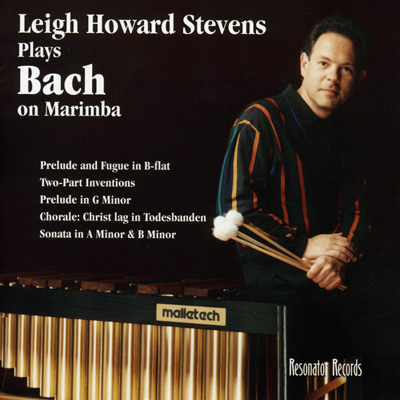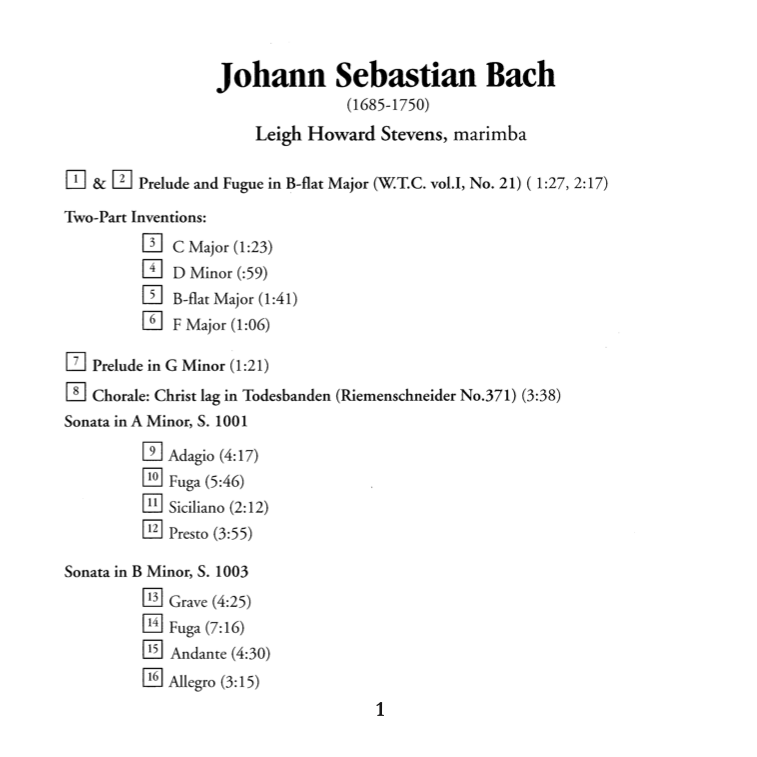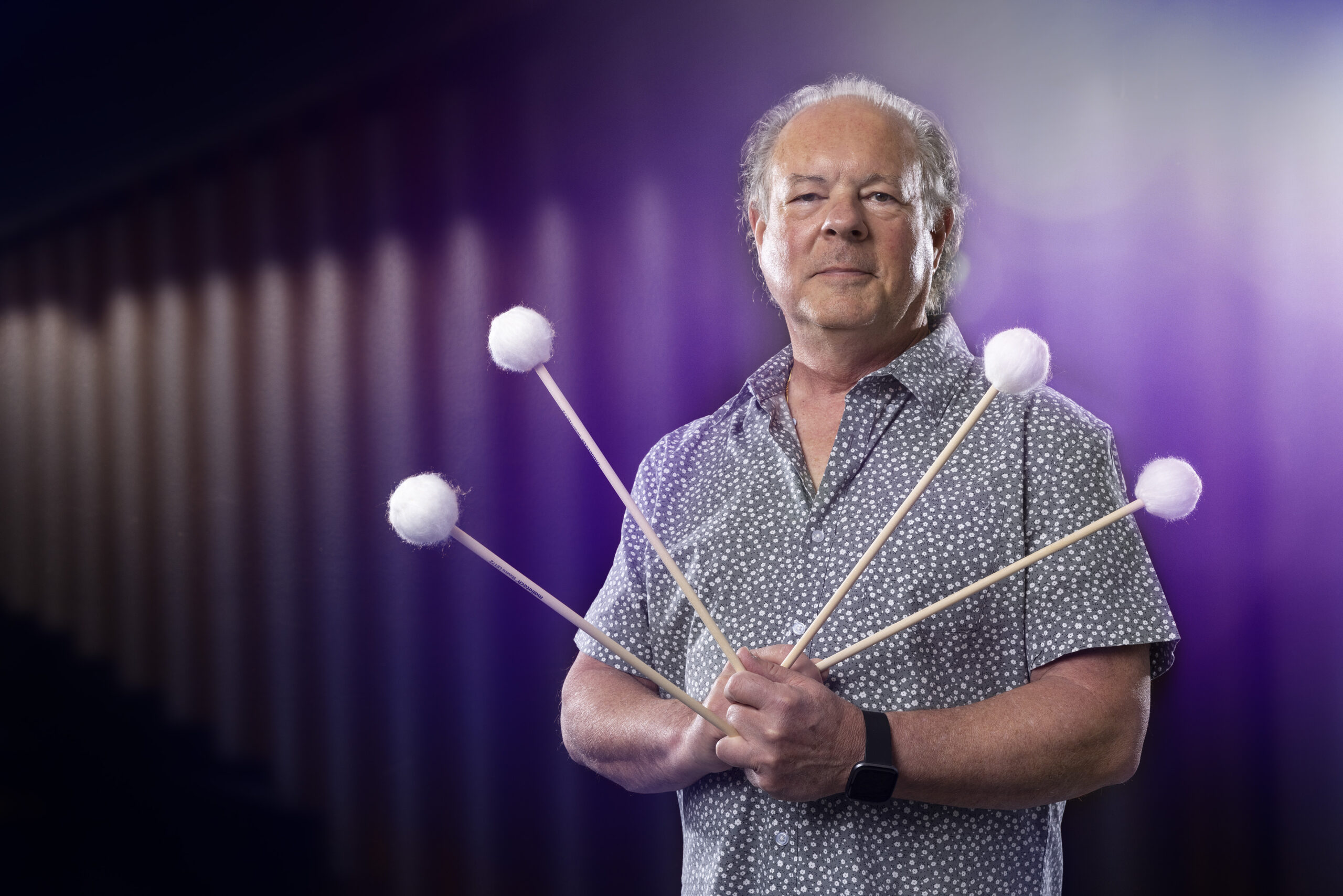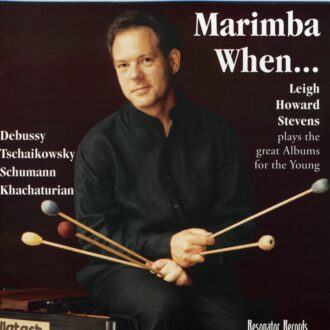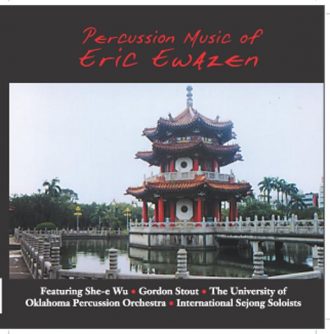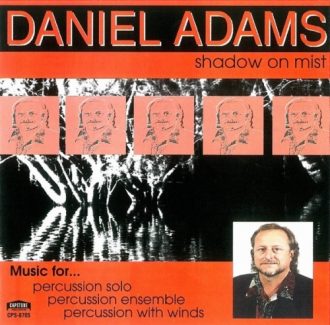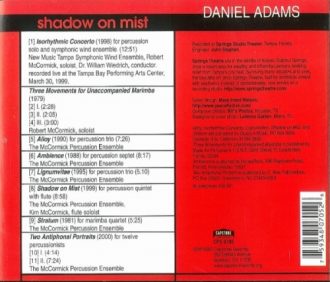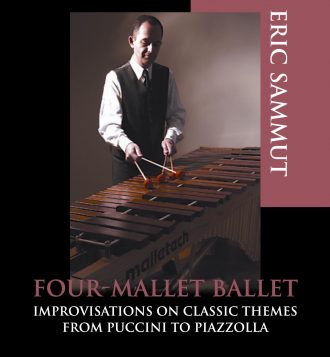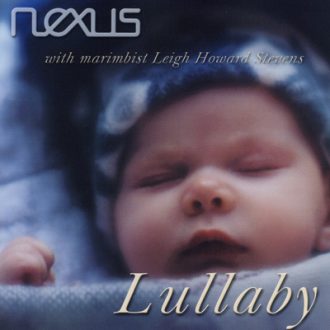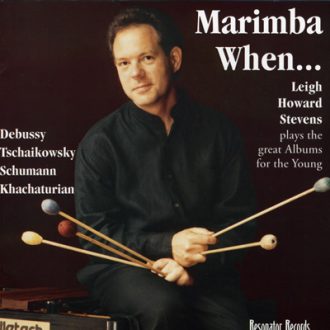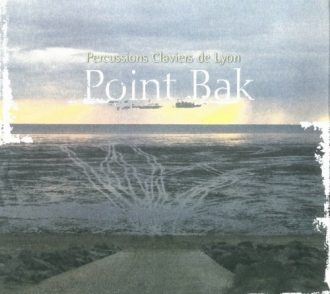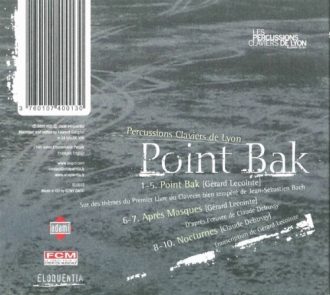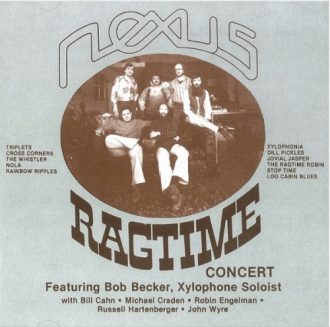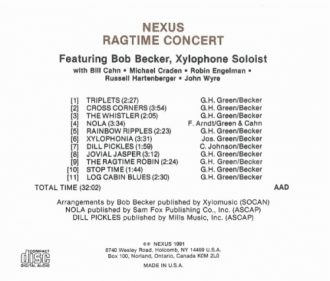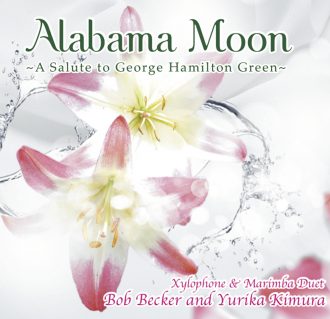Sheet music sold individually and as a collection.
“His devotion to both the music and his instrument suffuses every note with the passion of dedication. This remarkably faithful transcription takes us beyond a merely technical interest in Stevens’ facility on the marimba to a renewed appreciation for the universality of Bach’s music. The marimba delineates harmonic and contrapuntal details that the solo violin can only hint at. And Stevens lights an energetic fire worthy of Heifetz or Milstein in the Presto of the A Minor Sonata.”
–Digital Audio Magazine
Track List
-
- Prelude and Fugue in B-flat Major
- Prelude (1:27)
- Fugue (2:17)
- Two Part Inventions
- C Major (1:23)
- D Minor (:59)
- B-flat Major (1:41)
- F Major (1:06)
- Prelude in G Minor (1:21)
- Chorale: Christ lag in Todesbanden (3:38)
- Sonata in A Minor, S. 1001
- Adagio (4:17)
- Fuga (5:46)
- Siciliano (2:12)
- Presto (3:55)
- Sonata in B Minor, S. 1003
- Grave (4:25)
- Fuga (7:16)
- Andante (4:30)
- Allegro (3:15)
- Prelude and Fugue in B-flat Major
A selection of Program Notes for Bach on Marimba
There are several aspects of this Bach recording that make it special, the most obvious of which of course, is the instrument on which the music is performed. …While the marimba was probably not known in Europe at the time that J. S. Bach was composing the works represented on this album (it was probably working its way over to Central and South America with the slave trade), there are several facets of the marimba’s tone and Stevens’ manner of playing that make it an ideal “Neo-baroque” instrument. In particular, the ring time of the bars and the clarity of articulation make it so. No matter how well suited the marimba is for baroque music, there are still those who consider the very idea of transcription sacrilegious.
A distinction must be made, however, between an arrangement and a transcription. The word arrangement automatically confesses that changes have been made — notes added to make chords “fuller”, harmonies “jazzed up”, or even sections deleted. Serious musicians and listeners can justifiably cringe at the lengths certain performers will go to to make a work more “accessible” (read saleable…). A transcription however, implies a certain faithfulness to the original. There are of course, many different opinions of what constitutes “faithfulness”. There are those performers who profess to being wholly concerned with the overall spirit of a work, and others who feverishly compare minute pen strokes in different versions of the manuscript.
It should be emphasized that much of the music on this album could never have been attempted by a single marimbist until the development of Stevens’ new approach to four mallet technique. In fact, the Two Part Inventions are published in a marimba edition by a respected music publisher — as duets! This album is not one of those “switched on” Bach technological feats where the artist layers on many simple lines, one track at a time. In this case, that was not necessary, as can be attested to by the thousands who have heard Leigh Howard Stevens perform these works live in concert halls throughout the world.

